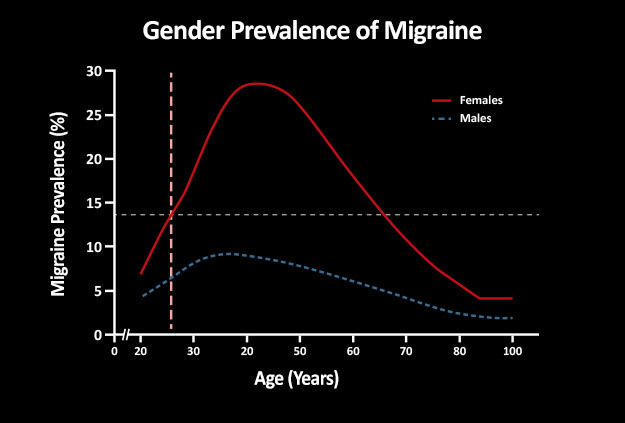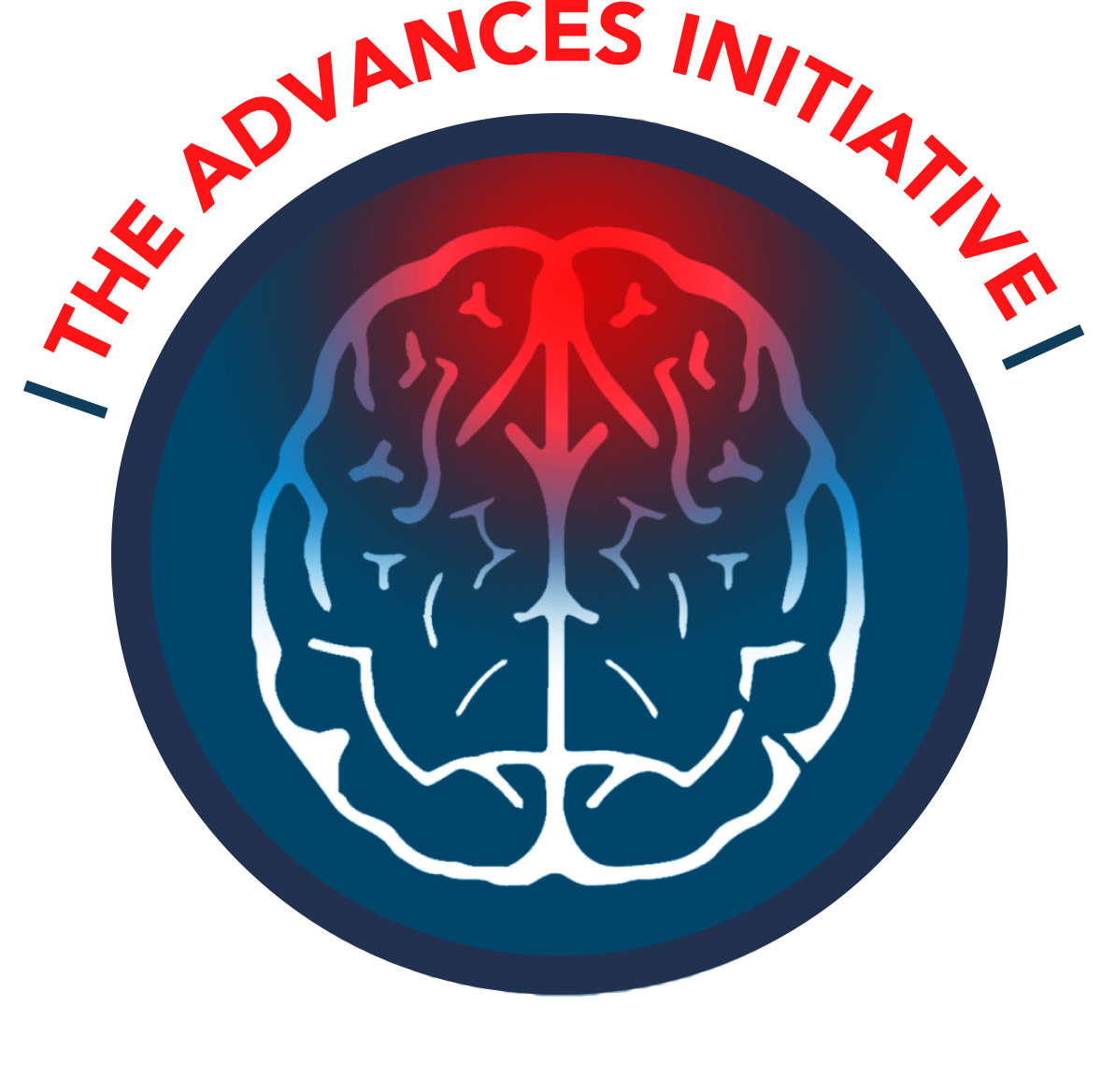Facts and figures
Migraine is a common headache disorder. It is characterized by moderate-to-severe pain with or without an aura and associated disabling symptoms, including nausea, vomiting, noise intolerance, and photophobia. Migraine sufferers often have a low quality of life, and there is a significant economic burden for both sufferers and their employers.1,2,3,4,5,6
- Headache is a major cause of disability, with a prevalence of 47% globally.1
- The three most common types of headache are tension-type, migraine, and cluster.1
- The estimated lifetime prevalence of headache is 66%.2
- The World Health Organization (WHO) ranks migraine as 8th among disorders causing disability.3
- There are 5–9 million primary care provider office visits per year in the US due to migraine.4
- Migraine has a higher prevalence among women than men, with estimates of the ratio ranging from 3:1 to 2:1.1,5
- This difference is likely related to hormonal differences and changes.5

Reference 6
- Improved migraine control and preventive treatment result in a decrease in the number and severity of headaches experienced, leading to7:
- Improved health outcomes and quality of life.
- Decreased disability and associated cost.
- Approximately 25% of neurology referrals are for headache.1
- Moderate-to-severe pain is reported by approximately 90% of migraine patients.2
- 75% report impaired function in daily life.
- 33% require bed rest to recover.
- Absenteeism refers to missed work days due to sickness or injury.8,9
- Employers in the US have been shown to lose an estimated $13 billion per year as a result of missed work days due to migraine, and approximately 113 million work days are lost per year.10
- One in five US adults suffers from migraine headaches.11
- Migraine ranks fifth for emergency department (ED) visits annually.11
- Migraines are the most common primary headache reason to visit an ED.12
- There are approximately 5 million annual visits for headache to US EDs.12
- Migraines are associated with approximately $17 billion in direct and indirect healthcare costs annually.11
- Diagnosis in the ED
- The diagnosis of migraine is predominantly clinical.
- The average cost of a migraine-related ED visit is $775.12
- Neuroimaging, such as computed tomography (CT) scans, increased by 50% between 1992–2001.12
- Over half of the migraine patients who presented to an urban ED in 2008 received a cranial CT.12
- More than 90% of migraine sufferers use at least one medication for acute migraine treatment.3
References
- Sinclair AJ, Sturrock A, Davies B, Matharu M. Headache management: pharmacological approaches. Pract Neurol. 2015;15:411-423.
- Becker WJ, Findlay T, Moga C, et al. Guideline for primary care management of headache in adults. Can Fam Physician. 2015;61:670-679.
- Becker WJ. Acute migraine treatment. Continuum (Minneap Minn). 2015;21 (4 headache):953-972.
- Minen MT, Loder E, Tishler L, Silbersweig D. Migraine diagnosis and treatment: a knowledge and needs assessment among primary care providers. 2016;36:358-370.
- Headache disorders (www.who.int/mediacentre/factsheets/fs277/en/) Accessed on 9/25/18.
- Lipton RB, Stewart WF, Diamond S, et al. Prevalence and burden of migraine in the United States: data from the American Migraine Study II. 2001;41:646-657.
- Loder E, Burch R, Rizzoli P. The 2012 AHS/AAN guidelines for prevention of episodic migraine: a summary and comparison with other recent clinical practice guidelines. 2012;52:930-945.
- Asay GR, Roy K, Lang JE, et al. Absenteeism and employer costs associated with chronic diseases and health risk factors in the US workforce. Prev Chronic Dis. 2016;13:E141.
- Greenwell C. Worker illness and injury costs US employers $225.8 billion annually. (http://migraineresearchfoundation.org/about-migraine/migraine-facts/) Accessed on 9/25/18.
- Migraine Research Foundation. (http://migraineresearchfoundation.org/about-migraine/migraine-facts/) Accessed on 9/25/18.
- Saguil A, Lax JW. Acute migraine treatment in emergency settings. Am Fam Physician. 2014;89:742-744.

.jpg)
.jpg)
.jpg)
.jpg)

.jpg)
.jpg)

.jpg)
.jpg)
.jpg)
.jpg)
.jpg)
.jpg)
.jpg)
.jpg)
.jpg)
.jpg)
.jpg)
.jpg)
.jpg)
.jpg)
.jpg)
.jpg)
.jpg)
.jpg)
.jpg)
.jpg)
.jpg)
.jpg)
.jpg)
.jpg)
.jpg)
.jpg)
.jpg)
.jpg)
.jpg)
.jpg)
.jpg)
.jpg)
.jpg)
.jpg)
 Copyright © 2025 Med Learning Group. Built by
Copyright © 2025 Med Learning Group. Built by